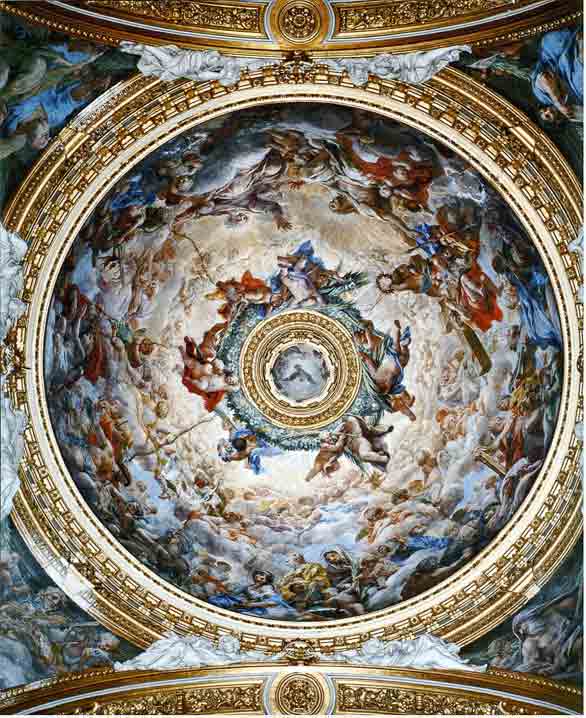 I often wonder how our ideas of the divine play into our lives – how we think about it, how we reflect upon it and how we uniquely manifest it. Well, I have recently had an opportunity to indulge in all three of these musings, each thought resounding loud and clear in my experience for the past 5 months. This is all due to the latest mural project I have just (about) completed – a Baroque ceiling mural titled ‘The Trinity in Glory & Prophets’ for a church in Houston, Texas.
I often wonder how our ideas of the divine play into our lives – how we think about it, how we reflect upon it and how we uniquely manifest it. Well, I have recently had an opportunity to indulge in all three of these musings, each thought resounding loud and clear in my experience for the past 5 months. This is all due to the latest mural project I have just (about) completed – a Baroque ceiling mural titled ‘The Trinity in Glory & Prophets’ for a church in Houston, Texas.
The mural was loosely based on an existing Baroque mural by Pietro da Cortona, painted between 1648 – 1651, at Santa Maria in Vallicella (Our Lady in the Little Valley), otherwise known as Chiesa Nuova, Rome. I used the basic framework and layering approach to the figures as seen in the original, keeping the same prophets, angels and cherub, while adjusting some of the compositional elements of the painting to accommodate the modified size of the dome. The focal point of the painting are three adjoining figurative groupings representing the Cross uplifted, Jesus resurrected and God the Father, respectively. These scenes are the first that a viewer would notice upon entrance to the church. Following the images upward, one would see a chorus of angels and cherubs receding into the distance, completed with a pronounced ring of garland and cherubs encircling the cupola edge at the very top. An image of the Holy Spirit in the shape of a dove crowns the mural at the very center of the dome.

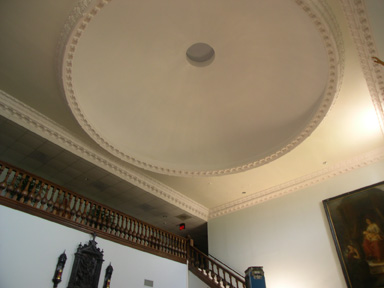
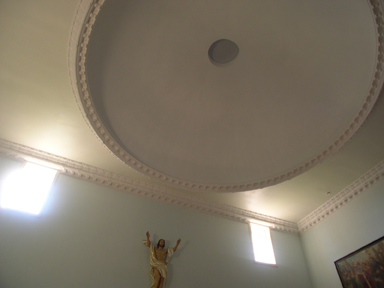
Dome – pre mural.
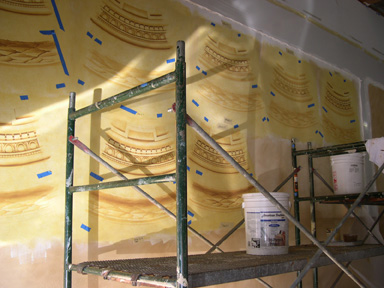
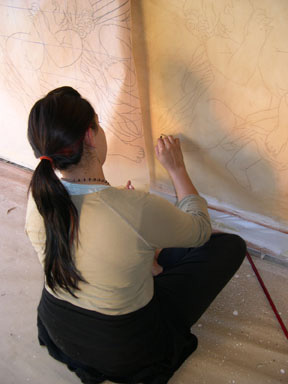
I began this project back in December of 2008, with planning, designing, drawing, models and templates being the first order of business. This engineering phase of work constitutes about 60% of the project and is the most crucial in regards to ensuring a snag free project. I tend to spend more time, money and energy in this phase since this is what makes or breaks a project of this nature. Because the church is in use every week it was decided that we would create the mural on canvas panels in studio, then install them onto the dome as was often done with oil paintings in the Renaissance and Baroque eras. The benefits to this are that the install and touch-up process only require a couple of weeks of disruption, whereas on site work would require up to 3 or 4 months of the same. Since the church was hesitant to disrupt their weekly commitments with a long drawn out project, and I was not inclined to be away from my studio for such an extended period of time, we decided to go with the canvas option. I must say I was a bit exacting in my preparations as I had never completed an all canvas compound curve mural in the past. I’ve done plenty of partial dome coverages with canvas in the past, but this would require full integration of each and every panel, meaning every measurement, every figure and every design had to be spot on. Nothing like a little apprehension to bring out the best in oneself!
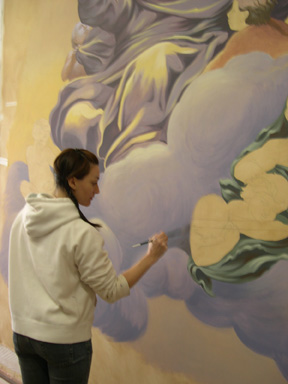
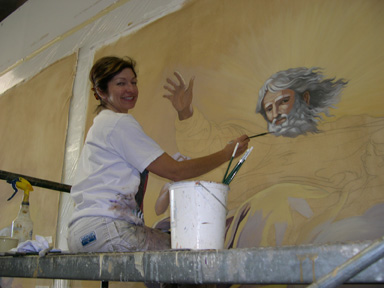
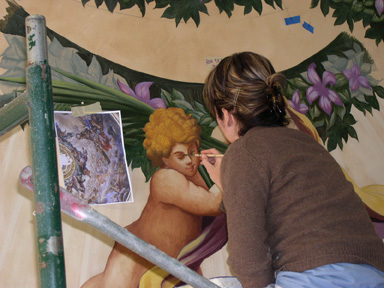
Panels in progress.
Planning and engineering of the mural required about 6 weeks, with actual art work requiring 10 to 12 weeks. The dome was of fairly good size, with a diameter of just under 24′. The original mural appeared to be designed with a series of 3 bands that encircled the dome – the upper band consisting of cherubs and garland, the middle band depicting tonal angels receding into the background and the lower band carrying the bulk of the main subject matter. Based on this observation, I set about designing a template for the dome which would allow for the curvature both vertically and horizontally. The final template was worked up on a CAD program and the results were better than I expected – each panel would fit adequately, with a 3% margin of error, based on the dimensions we had recorded.
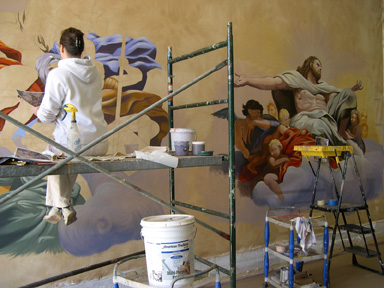
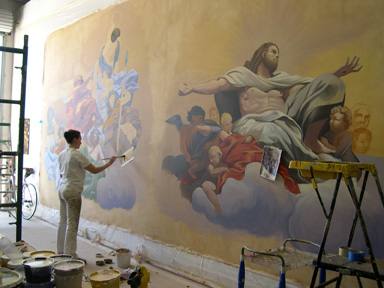
As you can see from the photos, we created very large panels with multiple image ‘groupings’ on each, which allowed for easy color continuity. The mural was painted using high quality acrylic and latex paints – I like Golden and Nova Color. I prefer using oils but since our schedule required a timely completion of all panels, we opted for the fast drying paints instead. Irregardless, the results were lovely. At which point I would like to extend my deepest gratitude to artists Tobie Roach and Charlene Lanzel for assisting with this project.
Once painted, the panels were removed from the walls and rolled onto tubes for shipping. After all the art work was sent to the site, we prepared ourselves for a 2 week stay in Houston to oversee installation of the panels and to complete on site touch-up as needed. The installation portion of the project will be covered in Part 2 of this series, along with final photos of the completed art work.

Panels coming off the walls.
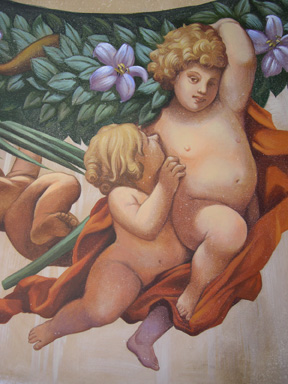
Details of the cherub panels.


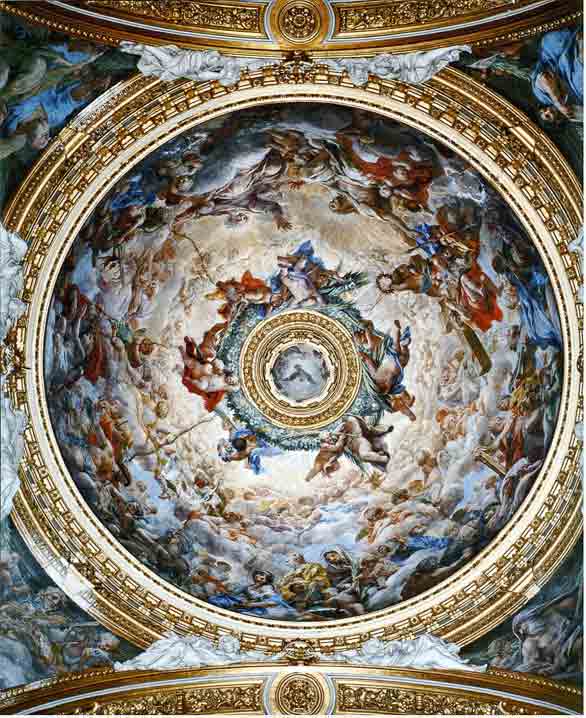
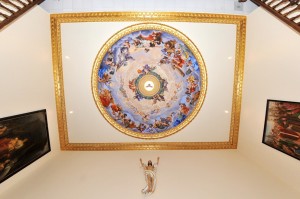
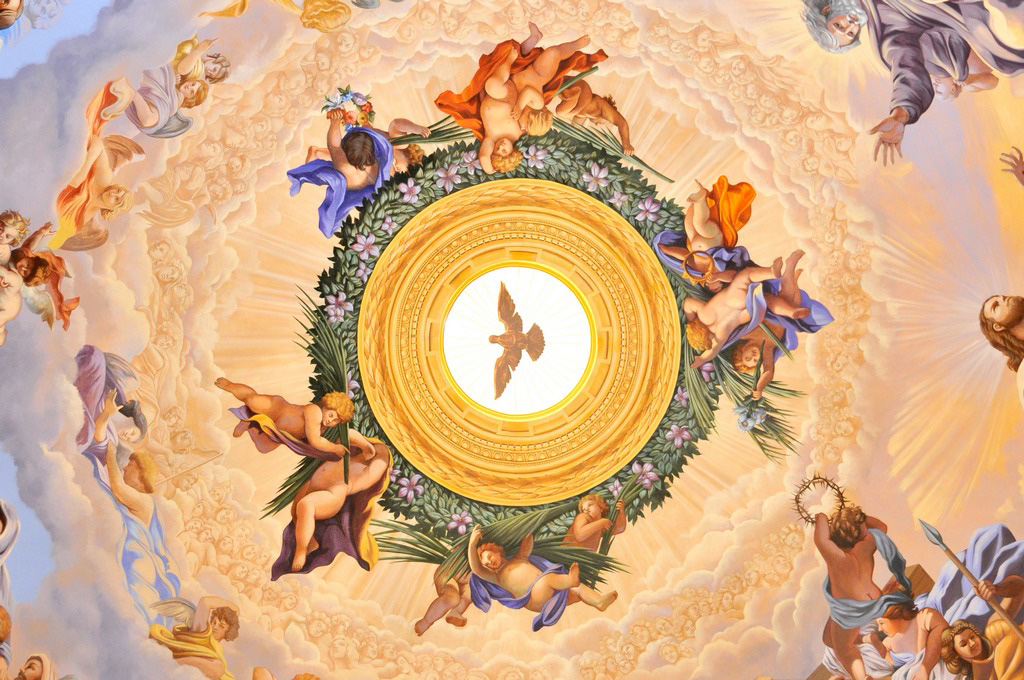






You are insanely gifted. Your volume and quality of creative output is truly motivational. I am very proud to have the good fortune to receive your FB feed every day. Thank you.
Outstanding and thank you for sharing this!
Awesome!
You are a modern day Master.
No words.
Very beautiful. Congratulations on this outstanding masterpiece.
I see you through your paintings which are beautiful, full of life, color and inspiration. Art speaks for you, who you truly are. My mother said most artists die before their work is recognized, but I like to believe through art you live on forever. It calmed me looking at your website through this rushed world we live in and it was a peaceful moment for me. Thank you.
Magnificent work! So few Good large scale painters worldwide, Highest compliments to you…The best I have seen, and I have seen much!
what canvas/material/background did you use and how did you adhere it to the ceiling after you painted the pictures on the wall?